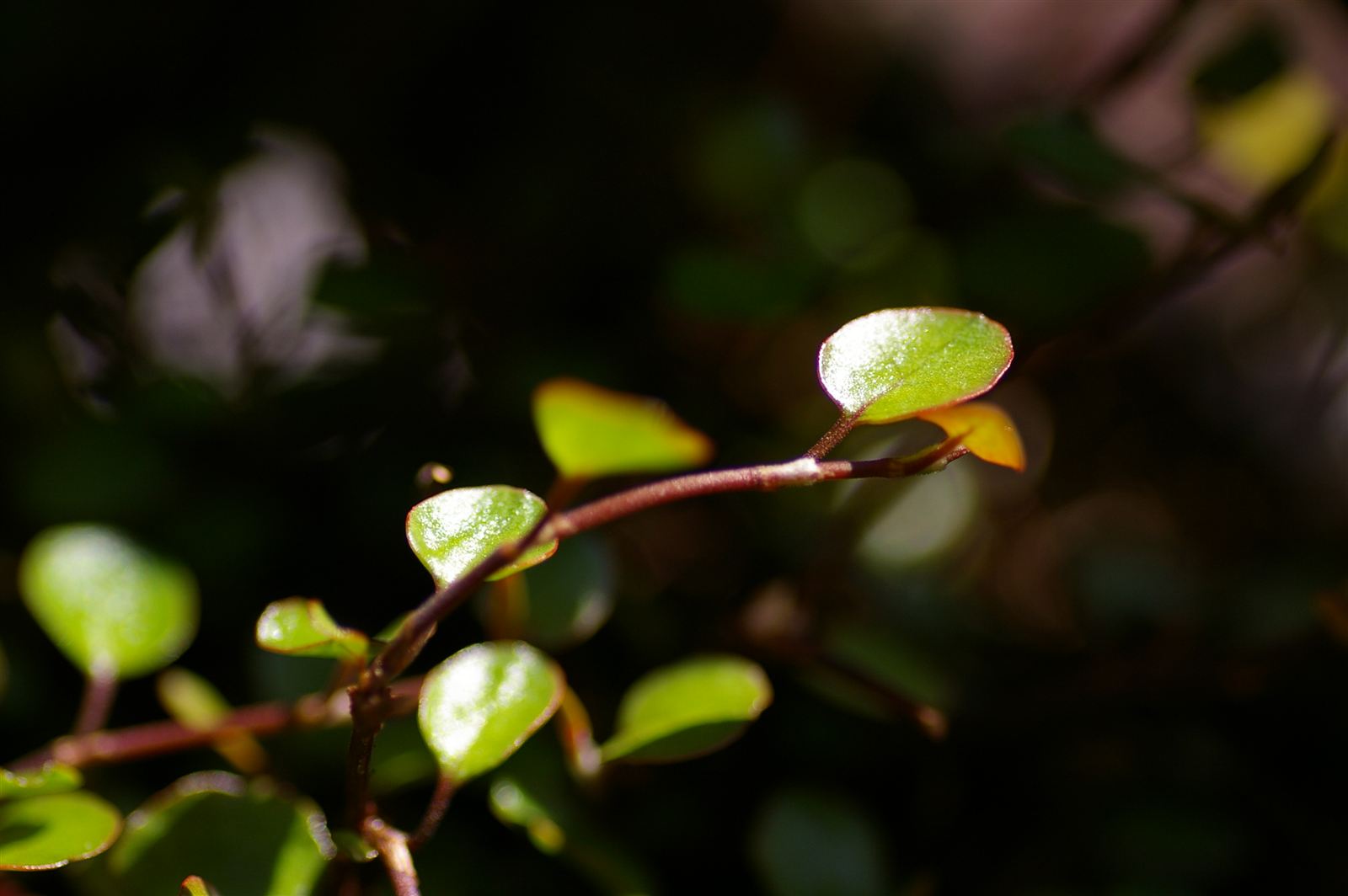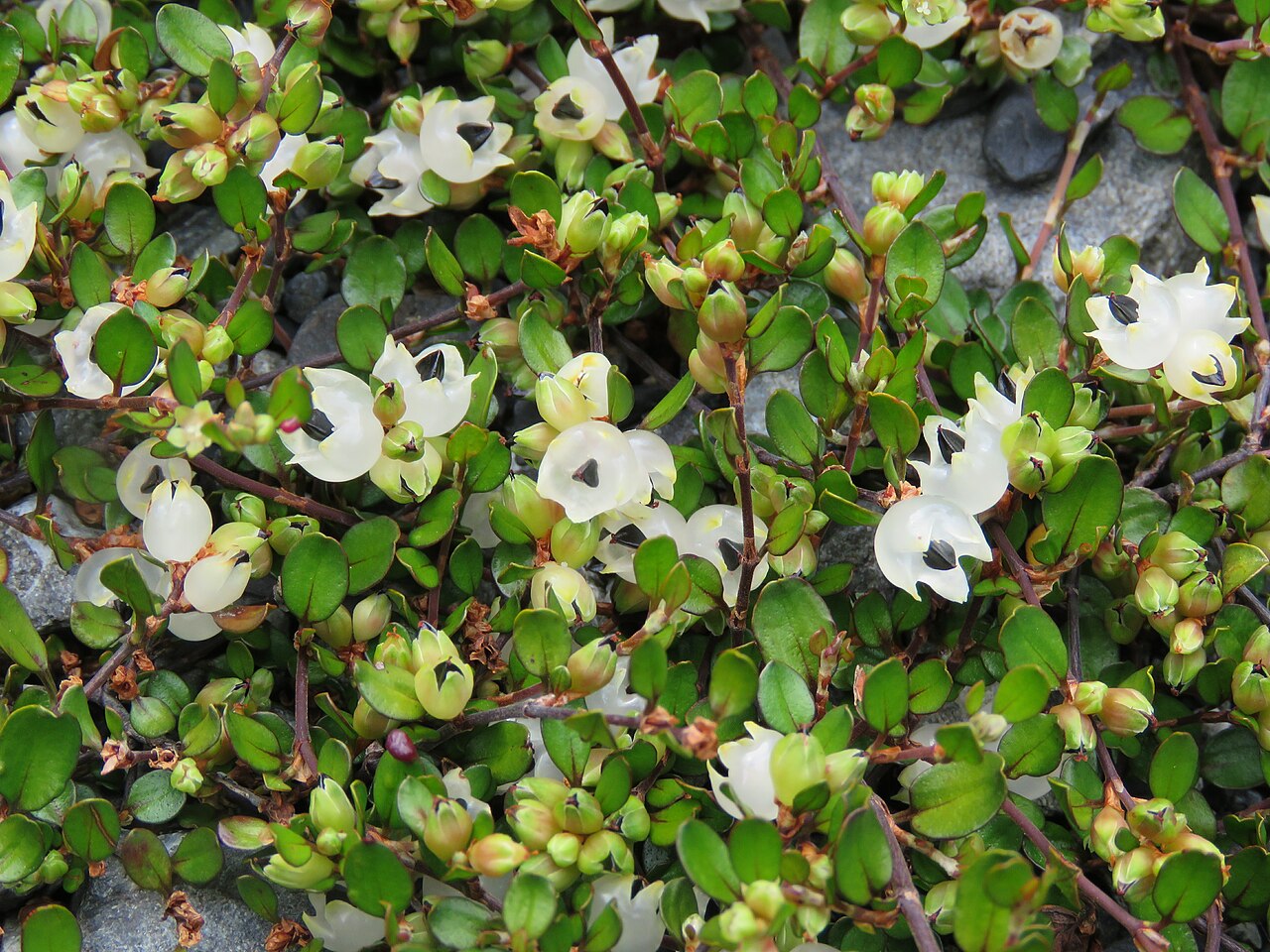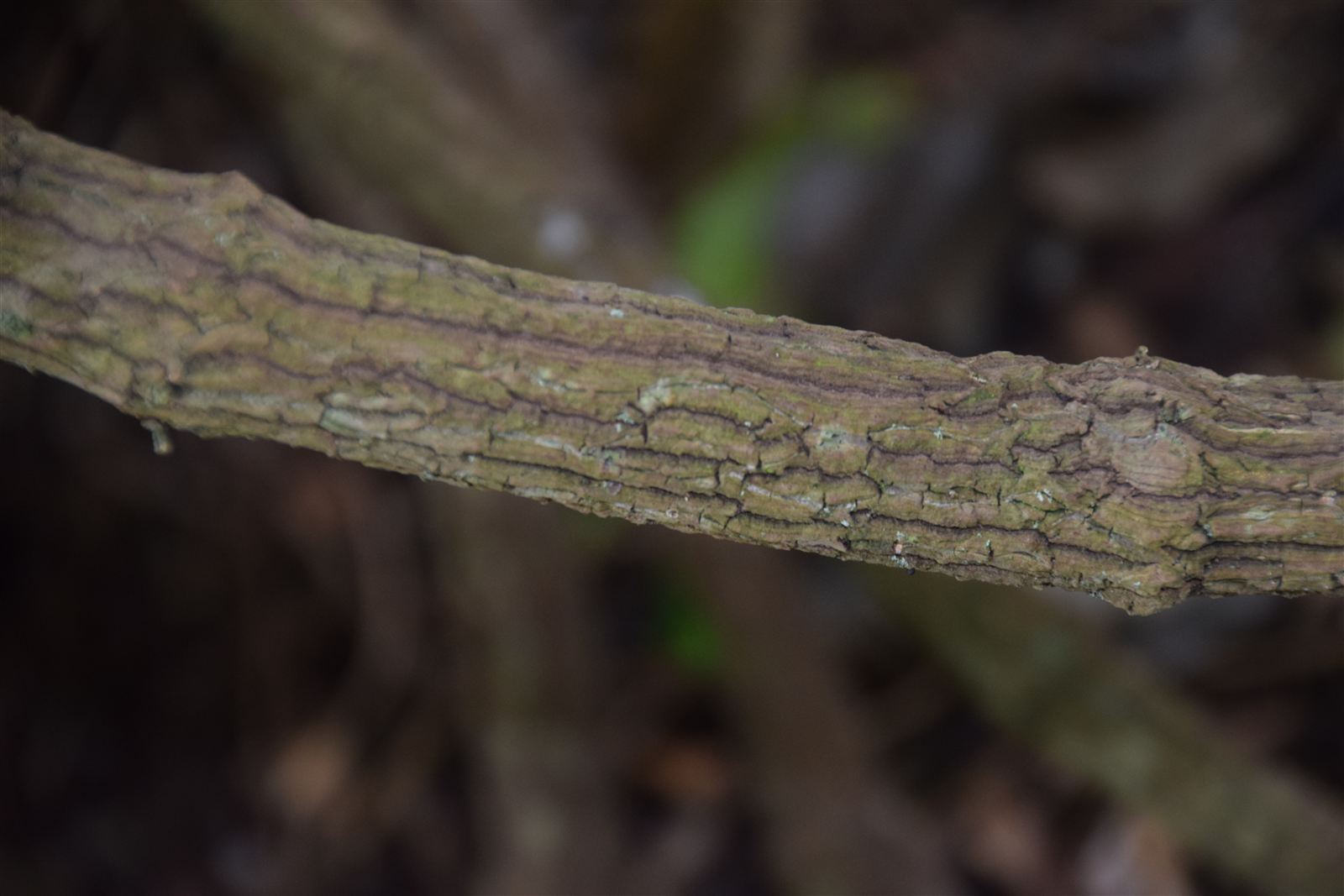Pōhuehue (Small-leaved Pōhuehue)
Muehlenbeckia complexa
Muehlenbeckia complexa, commonly known as Pōhuehue or Wire Vine, is a versatile native climber with fine, wiry stems and small, round leaves. This hardy plant forms dense tangles of dark stems and bright green foliage, making it excellent for covering walls or as a groundcover. Its small white fruits are an important food source for native birds, while its dense growth provides shelter for lizards and insects.

Image credit: Wikipedia
Quick Facts
| Height | 1-3 meters as climber |
|---|---|
| Spread | 2-5 meters |
| Growth Pattern | Climbing or scrambling |
| Light | Full sun to partial shade |
| Growth Rate | Fast |
| Soil Type | Well-draining, tolerates most soils |
| Frost Tolerance | High |
Climate Best Suited To
Pōhuehue (Muehlenbeckia complexa) is remarkably adaptable and can thrive throughout New Zealand. It is particularly well-suited to coastal environments where it tolerates salt spray, wind, and sandy soils.
| City | Climate Suitability |
|---|---|
| Whangārei | Ideal |
| Auckland | Ideal |
| Hamilton | Ideal |
| Tauranga | Ideal |
| Rotorua | Ideal |
| Gisborne | Ideal |
| New Plymouth | Ideal |
| Napier | Ideal |
| Whanganui | Ideal |
| Palmerston North | Ideal |
| Wellington | Ideal |
| Nelson | Ideal |
| Christchurch | Ideal |
| Dunedin | Good |
| Invercargill | Good |
Growing Requirements
Soil Requirements
Pōhuehue is adaptable to various soil conditions:
- Tolerates poor, sandy soils
- Prefers well-draining conditions
- Can handle coastal soils with salt content
- Performs best in slightly acidic to neutral pH
- Drought tolerant once established
Light Requirements
This versatile plant grows in various light conditions:
- Full sun to partial shade
- Thrives in full coastal sun
- More compact growth in higher light
- More elongated stems in shadier spots
Water Requirements
Watering needs for Pōhuehue:
- Moderate water while establishing
- Drought tolerant once established
- Avoid waterlogged conditions
- More frequent watering in containers
Uses & Significance
Garden Uses
- Cascading over walls and banks
- Scrambling through other plants
- Ground cover for difficult areas
- Coastal gardens
- Erosion control
- Wildlife-friendly gardens
Cultural Significance
- Traditional food source (berries)
- Medicinal uses in Māori rongoā
- Stems used for weaving and binding
Ecological Value
- Provides shelter for lizards
- Berries feed native birds
- Habitat for native insects
- Coastal dune stabilization
- Pioneer species in disturbed habitats
Seasonal Care Calendar
Spring
- Remove winter-damaged growth
- Apply slow-release fertilizer
- Prune to maintain size if needed
- Install support structures for climbing
Summer
- Water during extended dry periods
- Train new growth onto supports
- Trim to contain if spreading too far
- Watch for pests during warm weather
Autumn
- Reduce watering as temperatures drop
- Add mulch around base if needed
- Last chance for significant pruning
- Check plant supports before winter
Winter
- Minimal water needed
- Protect from severe frost in coldest areas
- Avoid major pruning
- Plan spring training and support needs
When to Prune and How Much
Pōhuehue benefits from regular pruning to keep its growth in check:
- Prune in spring after frost danger has passed
- Cut back vigorous growth to prevent overtaking other plants
- Remove dead or damaged stems at any time
- Can be cut back hard to rejuvenate overgrown plants
- Train new growth onto supports after pruning
Planting Guide
When to Plant
The best times to plant Pōhuehue are:
- Spring - ideal for most regions
- Autumn - good alternative, especially in warmer areas
- Avoid planting during summer heat or winter frost
Planting Steps
- Choose a site with well-draining soil and appropriate light
- Dig a hole twice as wide and the same depth as the root ball
- Mix compost into the backfill soil if planting in poor soil
- Place plant at the same level as it was in the pot
- Backfill and firm gently to remove air pockets
- Water thoroughly and apply mulch
- Install climbing support if growing as a climber
Propagation Methods
From Cuttings
Pōhuehue is easily propagated from cuttings:
- Take 10-15cm semi-hardwood cuttings in spring or autumn
- Remove lower leaves and dip in rooting hormone
- Insert into a mix of perlite and seed-raising mix
- Keep consistently moist but not wet
- Roots should develop within 4-6 weeks
- Transplant once well rooted
From Seed
Seed propagation is also possible:
- Collect ripe seeds from white berries in autumn
- Clean pulp from seeds and sow fresh
- Seeds need light to germinate, so cover lightly
- Keep consistently moist until germination
- Expect germination in 2-4 weeks
Cultural History
Pōhuehue has played a significant role in New Zealand's cultural history:
- Traditional food source - berries were eaten by Māori
- Used in rongoā (traditional medicine) for various ailments
- Flexible stems used for weaving and binding
- Recognized for its resilience and adaptability in challenging environments
- Modern revival in ecological restoration projects
Pests & Diseases
Common Pests
- Scale insects - treat with horticultural oil
- Aphids - wash off with water or use insecticidal soap
- Mealybugs - remove with alcohol-soaked cotton swab
Disease Prevention
- Ensure good air circulation
- Avoid overhead watering
- Plant in well-draining soil
- Remove and destroy any diseased plant material
Bonus Tip
To create a striking garden feature, train Pōhuehue over a simple wire frame shaped into a sphere or other geometric form. The wiry stems will gradually cover the structure, creating a living sculpture that provides valuable habitat for birds and lizards while showcasing the plant's unique texture.



